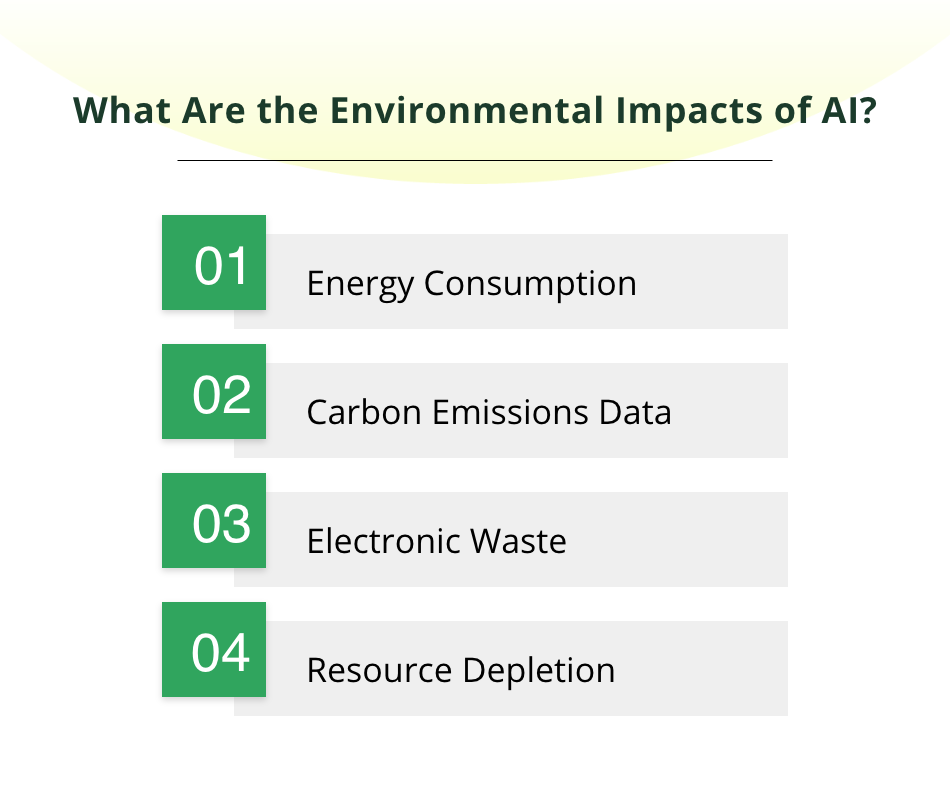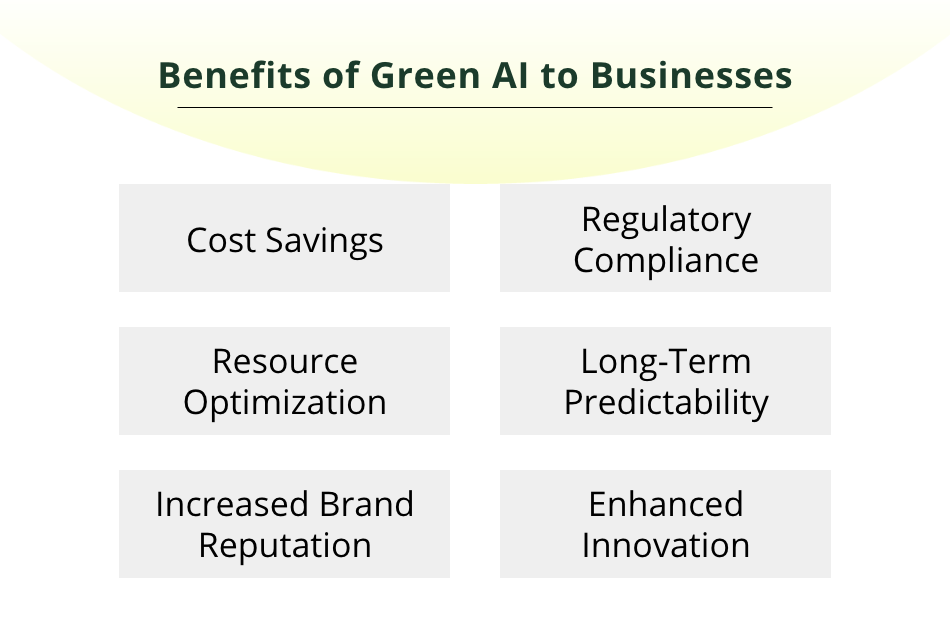Green AI is an ever-evolving technology that makes AI development more sustainable and revolutionizes businesses to a great extent.
Updated 20 March 2024

Head of Marketing at Appventurez
The predominance of artificial intelligence is expanding at an unprecedented rate, and it will not slow down any time soon. Recent AI trends have provided numerous advantages to all kinds of businesses, industries, and individuals, transforming the way they operate.
With the launch of generative AI tools like ChatGPT, the growth of AI has climbed to an unbelievable height. In fact, it was projected that the global AI market would reach half a trillion by the end of 2023.
Consequently, the demand for AI development services is also accelerated. Businesses often look for advanced forms of AI technology that enhance operational efficiency while keeping the environment from degradation.
In regard to this, environmentally sustainable AI or “Green AI” came into the picture. It leverages computational techniques to eliminate the risk of ecological harm. Well, there is so much to AI sustainability that we will be covering here. So, let’s delve into the world of Green AI and how it reduces the negative impact of artificial intelligence on environment.
Due to its immense benefits in the tech world, investing in artificial intelligence is considered the right choice for any business. However, one must understand the AI environment impact and incoming challenges along with the advancement of AI.

AI model training gives birth to carbon emissions that come from the energy consumption of data centers. The centers mostly depend on the electricity caused by several sources, like fossil fuels including coal & natural gas.
Burning these fossil fuels releases carbon dioxide into the air, leading to greenhouse gas emissions and global warming. This is one of the prominent reasons why Green AI came into existence.
Data centers that support AI operations are among the largest electricity consumers globally. These facilities house racks of powerful computers, which need constant cooling, leading to significant energy consumption. Training complex AI models, like large neural networks (a resource-intensive process) demands a notable computational power.
Consequently, these monumental data centers consume a substantial amount of electricity, posing a negative impact of artificial intelligence on the environment.
The ever-rising proliferation of AI-powered devices, like smartphones, IoT devices, autonomous vehicles, and smart speakers collectively contributes to electronic waste or e-waste. This specifically happens when these devices reach the end of their lifecycle.
No matter how much they benefit humankind, their improper disposal of e-waste can lead to environmental pollution due to the presence of hazardous materials. Due to this, it becomes crucial to adopt AI-driven innovations and promote Green AI solutions extensively.
AI- and ML-based algorithms can sustain or degrade societal biases and inequalities based on the datasets they are fed. If the AI systems are biased, they can lead to unfair outcomes in areas such as hiring, lending, criminal justice, and healthcare.
This can further contribute to environmental injustice and resource depletion, worsening social disparities to a large extent.
Green artificial intelligence is the usage of artificial intelligence that will be environmentally friendly. It means leveraging the features of AI in such a way that it doesn’t harm the planet and makes it better instead.

Source : Forbes
For example, imagine developing and leveraging a robot that will take your orders and complete the given tasks. In this case, it is advisable to build a robot that will consume limited energy and still get your work done. This is what ‘Green AI’ is.
The main agenda of Green artificial intelligence is to maximize energy efficiency, reduce gas emissions and greenhouse, and promote more sustainable practices. Green AI that focuses on various sustainable AI practices has numerous benefits, like:
Green artificial intelligence has numerous benefits for businesses, ranging from cost savings to enhanced performance. Here are some of the key advantages:

Executing Green AI practices in your business can lead to significant cost savings for your business. By instilling algorithms and hardware focused on AI and environmental sustainability, companies can reduce their electricity bills associated with AI model training and inference. Energy-efficient AI Infrastructure can also lead to lower cooling and maintenance costs for data centers.
Most of the industries are moving towards the rigorous environmental regulations and sustainability reporting requirements. By embracing the features of Green artificial intelligence, businesses can ensure compliance with different regulations to avoid legal issues or potential fines.
Businesses can optimize their computing resources by leveraging Green AI techniques. It means they can achieve the same AI results with fewer computational resources, allowing for resource allocation to other crucial tasks.
Renewable energy sources, such as solar and wind power, used to power AI Green infrastructure, often come with predictable and stable costs. This can provide businesses with greater cost predictability and protection against unsteady energy pricing.
Adopting Green AI demonstrates a commitment to sustainability and environmental responsibility. This can enhance a company’s brand reputation, appeal to eco-conscious customers, and attract socially responsible investors.
Investing in Green artificial intelligence can stimulate innovation within a company. Research and development efforts can lead to the creation of more energy-efficient AI algorithms and technologies, potentially opening up new market opportunities.
The integration of Green artificial intelligence has taken over various industries with the agenda of reducing environmental impact, boosting sustainability, and enhancing operational efficiency. Here’s a look at the role of Green AI in different verticals:
Green artificial intelligence has a significant role in boosting the environmental sustainability of various data centers and IT services. These IT solutions or data centers are known for high energy consumption, affecting the environment. The integration of Green AI in these services helps in reducing these environmental challenges and focuses on promoting sustainability.
Google’s DeepMind is one of the successful examples of Green AI. DeepMind built an AI-based system by leveraging the features of environmental AI for optimizing the data center cooling, ultimately leading to major energy savings.
Incorporating Green AI in the industry of manufacturing has played a huge role in improving and transforming environmental sustainability. Several manufacturing services and processes lead to resource utilization and energy consumption. By implementing Green AI in manufacturing industry, businesses ensure sustainable resource management in many ways.
Here is an example of Siemens, one of the successful companies, that has integrated the benefits of Green AI for environmental sustainability.
The algorithms of AI optimize the production schedules and adapt to real-time conditions. It results in the reduction of energy consumption and waste. With the help of this strategy, Siemens was able to reduce the energy cost along with the unnecessary environmental impact.
Green artificial intelligence combines advanced technologies to address various environmental challenges and improve the efficiency and sustainability of energy & utility sectors.
Here is an example of Tesla that has taken advantage of advanced AI green practices to overcome its sustainability challenges. By leveraging different AI algorithms, Tesla optimized the energy consumption in its electric vehicles (EVs).
AI systems observe and learn from driver’s behavior and different environmental factors to boost energy efficiency. Tesla’s commitment to Green AI aligns with its goal of advancing the world’s transition to sustainable energy.
The construction industry is facing growing environmental concerns and the urgent requirement for sustainability. Green AI is emerging as a game-changer in transforming building and construction services. Artificial Intelligence in construction is all set to revolutionize the industry by reducing environmental impact, enhancing efficiency, and enabling smarter decision-making.
One of the core examples of Green AI in the industry of construction services is IBM Watsonx. The AI of IBM Watsonx is used for managing smart building systems. It monitors and optimizes building energy usage, like heating, lighting, and cooling.
Watsonx minimizes energy waste and operational costs by adjusting the systems in real time based on occupancy and weather data.
The rapid evolution of retail and supply chain services has made sustainability one of the paramount concerns. Green artificial intelligence is playing a pivotal role in reshaping the industry. It empowers retailers and supply chain managers to reduce waste, optimize operations, and make eco-friendly decisions.
Walmart can be a classic example in this context, showcasing how leveraging sustainability-focused AI in the retail industry can make a difference.
Walmart utilizes AI algorithms to optimize its Heating, Ventilation, and Air Conditioning (HVAC) systems in multiple stores. These AI systems adjust temperature settings based on store occupancy and outside weather conditions, resulting in energy savings and reduced carbon emissions.
The integration of Green artificial intelligence redefines how farmers and agricultural stakeholders manage resources and reduce the industry’s environmental footprint. Let’s discuss how the implementation of Green AI in agriculture has contributed to minimizing the negative impact of artificial intelligence on environment.
Microsoft’s FarmBeats project utilizes the features of AI and IoT devices to promote sustainable agriculture. AI optimizes irrigation, fertilization, and pest control, reducing resource usage and environmental impact by giving data-driven insights to farmers.
The tension among business owners & industries regarding the AI environmental impact is rapidly increasing. However, Green AI plays a significant role in addressing the growing concerns.
Red AI refers to the research of artificial intelligence in order to boost accuracy by utilizing computational power. It has a positive impact on climate change through two ways:
If we talk about the difference between Green AI vs Red AI, as the term refers- ‘Green artificial intelligence’ majorly focuses on boosting efficiency and reducing cost. On the other hand, Red AI is more inclined towards the advancement of accuracy.
The role of AI in business is indispensable, paving their paths to impeccable opportunities. Undoubtedly, it is changing the commercial landscape; however, it is impacting the environment, as well. The urgency to reduce these environmental impacts has given rise to Green AI, a paradigm shift in AI design and application.
If you want to execute AI solutions for the betterment of your business, our highly proficient team at Appventurez has got your back. We are a well-established product development and IT services company with a commitment to delivering innovative and sustainable solutions.
At Appventurez, we harness the power of artificial intelligence in a way that environment-related risks are significantly mitigated. Our comprehensive set of AI development services include:
We have a team of professionals, who are adept in creating and deploying energy-efficient algorithms and integrating renewable energy sources. In a nutshell, we ensure delivering environmental innovations, leading you towards a sustainable business.
So, let’s embark on a transformative and greener journey together by leveraging the full potential of Green AI.
Q. What is Green AI, and how does it differ from traditional AI?
Green AI focuses on making artificial intelligence environmentally friendly. Unlike traditional AI, it prioritizes energy efficiency, reduces carbon emissions, and promotes sustainable practices.
Q. What environmental challenges does traditional AI lead to?
Traditional AI systems have significant environmental drawbacks. They consume enormous amounts of energy, particularly during the training of deep neural networks. Data centers supporting AI operations are major electricity consumers, and the energy often comes from non-renewable sources, contributing to a high carbon footprint.
Q. How can Green AI benefit businesses?
The usage of Green artificial intelligence reduces energy consumption, resulting in cost savings and a smaller carbon footprint. It also optimizes data management, improving recycling rates and waste reduction. Moreover, embracing Green AI can not only enhance a company's environmental reputation but also make AI adoption more economically viable.


Elevate your journey and empower your choices with our insightful guidance.

Head of Marketing at Appventurez
Twinkle Kalkandha is a seasoned digital marketing professional with 8+ years of experience. As a Head of Marketing, she oversees the website content, creates strategies for social media campaigns, and works towards generating leads through organic channels.
You’re just one step away from turning your idea into a global product.
Everything begins with a simple conversation.